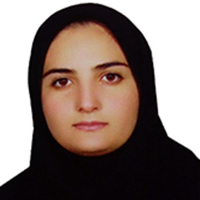Lived experience of university startup teams
In the last decade, universities have invested significantly in startup accelerator programs. While research on academic startup accelerators is limited, it supports multiple roles and outcomes. Recent research identifies two main roles for university start-up team accelerators-developing students' entrepreneurial skills or supporting technology transfer-and provides case studies that illustrate each: the MIT Delta Accelerator, which focuses on entrepreneurship education, and the Transfer Accelerator. Arizona State University Technology, which focuses on technology transfer. Technology transfer means the commercialization of research conducted by professors and graduate students. However, researchers found that current undergraduate students or recent graduates were more likely to create high-quality startups within three years of graduating from US universities. Similarly, found that students at UK universities were ten times more likely to start businesses than faculty members. Recognizing that students are a powerful source of entrepreneurship stimulation, universities have begun to develop ecosystems that support the creation of student startups, and university accelerators are one of the constituent elements of this ecosystem. According to the report of Global Entrepreneurship Monitor, the status of entrepreneurship education in Iran's schools and universities has improved over the last few years, but Iran's score is still lower than the world average. On the other hand, with the process of globalization, social, economic, political and health conditions have changed and universities need a system that teaches and promotes creativity, entrepreneurship and innovation to students and faculty members, which is one of the projects of Shahid Beheshti University is NOA.
The method used in this study is qualitative and phenomenology was used to receive the lived experience of the participants in the NOA project and the tool used was interview. Participants in the study included participants in Shahid Beheshti University NOA project who reached the final stage or were not selected in the final test, which was obtained after interviews with 10 theoretical saturation teams. Content analysis method was used for data analysis. In total, 10 teams agreed to conduct the interviews, following the theoretical saturation.
The NOA project is held every year with the aim of motivating, training and advising innovators to create knowledge-based and creative companies in the innovation centers of Shahid Beheshti University's faculties and research institutes. 580 ideas were received from all over the country. 128 teams entered NOA's pre-acceleration period. 4 workshops about entrepreneurship ecosystem, presentation skills to attract capital, zero to hundred entrepreneurship and business model canvas were held. Mentoring sessions were held for 155 hours for 128 teams in two specialized and business mentoring sections, of which 78 teams made it to the preliminary evaluating stage, and finally 26 teams made it to the acceptance and evaluation committee of Science and Technology Park. In this research, the lived experiences of the participants in the NOA project were investigated and the results were expressed about the components of failure, success and their understanding of the project. In total, according to theoretical saturation, 10 teams agreed to conduct the interview. Regarding the components of failure, from the participants' point of view, 7 main codes and 3optional codes were obtained from the interview analysis. The participants believed that poor time management, poor mentoring and counseling services were one of the reasons for their failure in the NOA project. The components of success from the participants' point of view included two selection codes and one central code, which generally included the components of effective communication and presentation of strong plans.
It seems that the participants in the NOA project identified poor time management, mentoring and refereeing services as the factors that led to their failure in the project. Some participants admitted that they did not receive enough training to participate in the scheme. Although this university has organized business and specialized counseling sessions in this field, sometimes they were few or at the preliminary level for startups. On the other hand, weakness in time management has been one of the important factors of their failure. Since this project was difficult to start and hold face-to-face meetings during the Corona epidemic, the team members have not been able to hold face-to-face meetings with each other as they should. Some participants also considered the short duration of the project and its early completion as an obstacle to planning. Another factor that hindered the success of the teams was the lack of recognition of the referees. Since this plan included the entire university and different disciplines, the provision of mentoring and refereeing services was not defined based on the field and expertise of each startup, which weakened the provision of these services. On the other hand, those who managed to present their plan in the end admitted that team building was one of the factors of their success. The team members were complementary to each other and each specialized in a subject. Other factors that have contributed to the success of the teams are the motivation and intention they pursue to become entrepreneurs.
- حق عضویت دریافتی صرف حمایت از نشریات عضو و نگهداری، تکمیل و توسعه مگیران میشود.
- پرداخت حق اشتراک و دانلود مقالات اجازه بازنشر آن در سایر رسانههای چاپی و دیجیتال را به کاربر نمیدهد.




